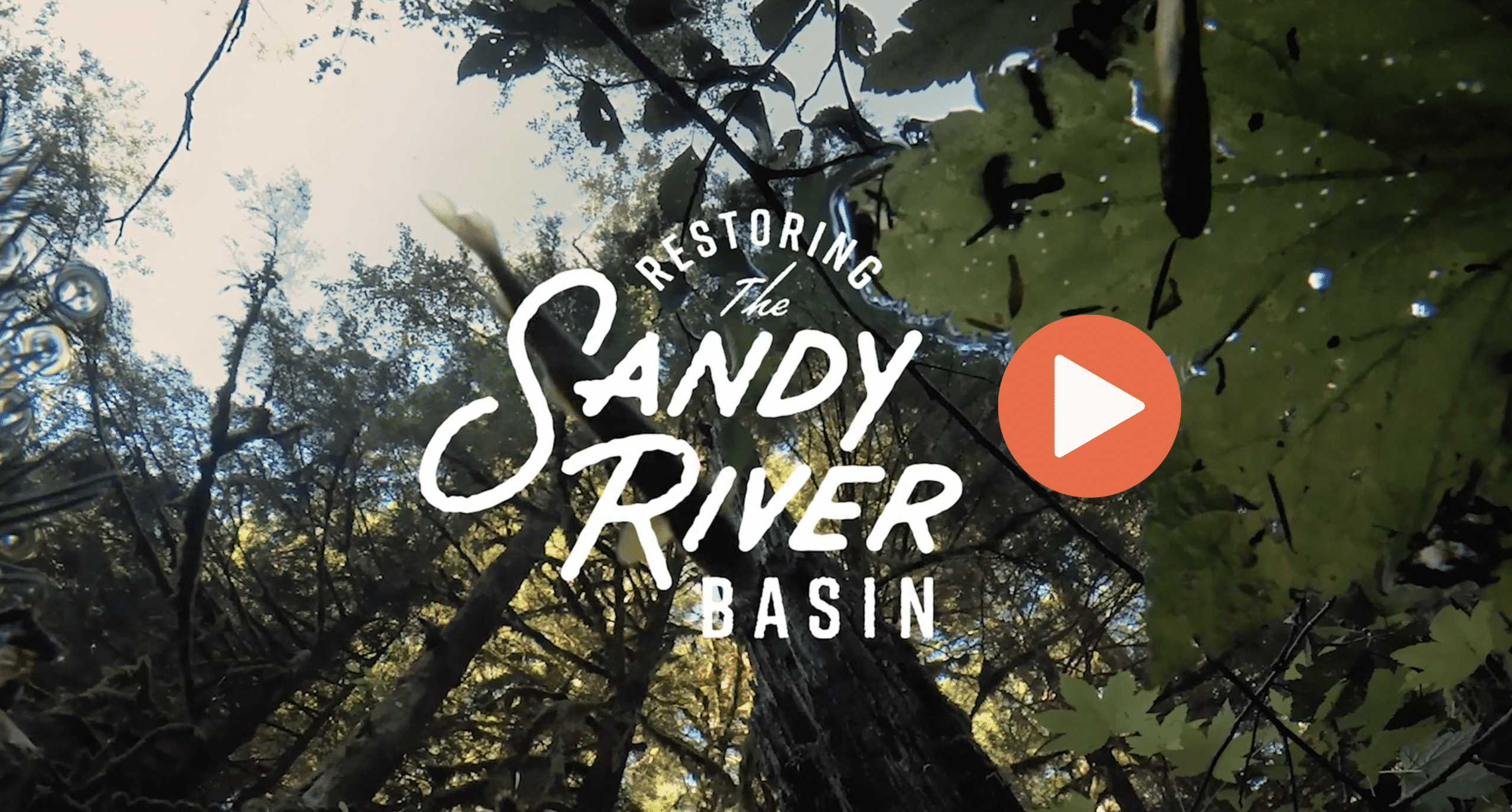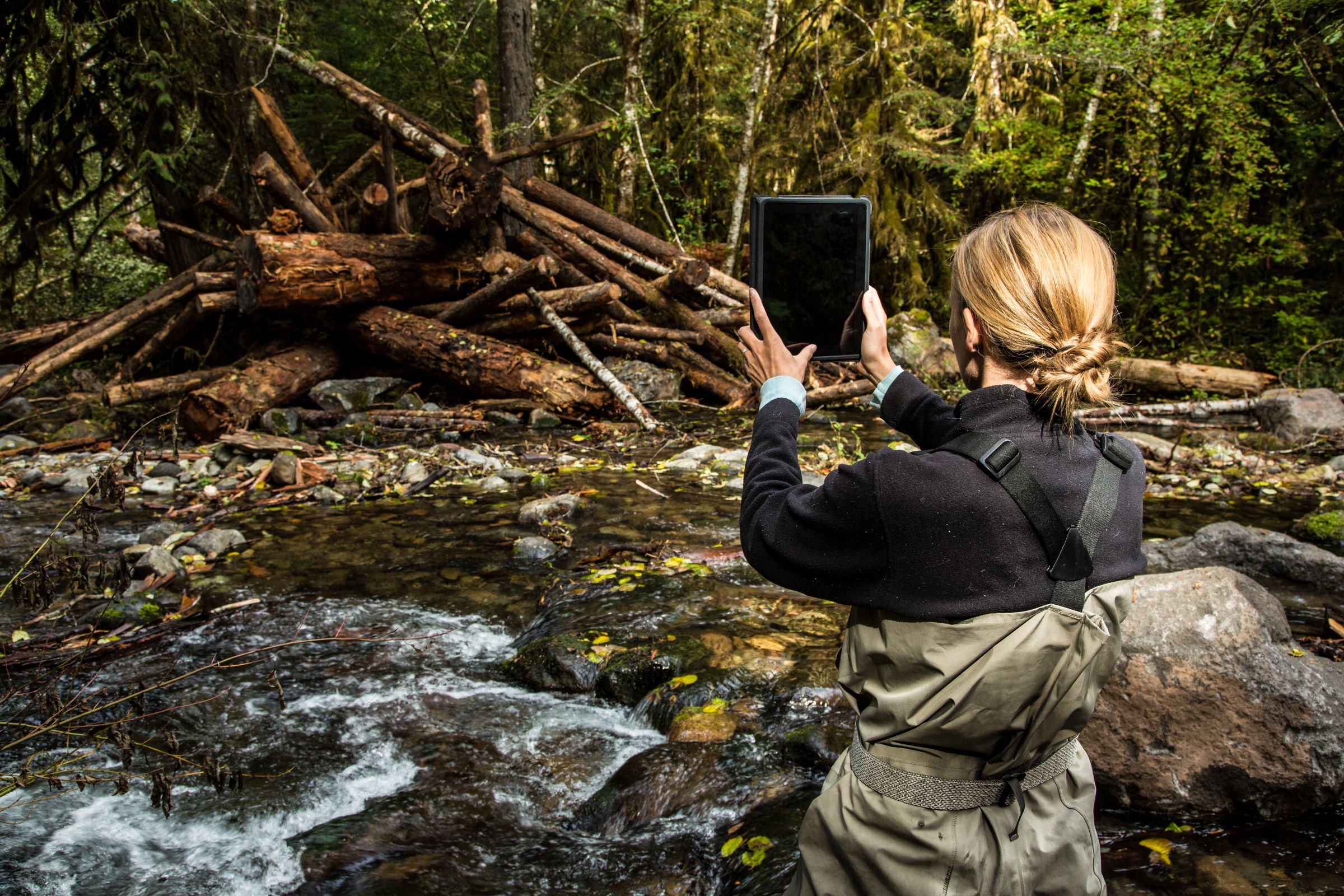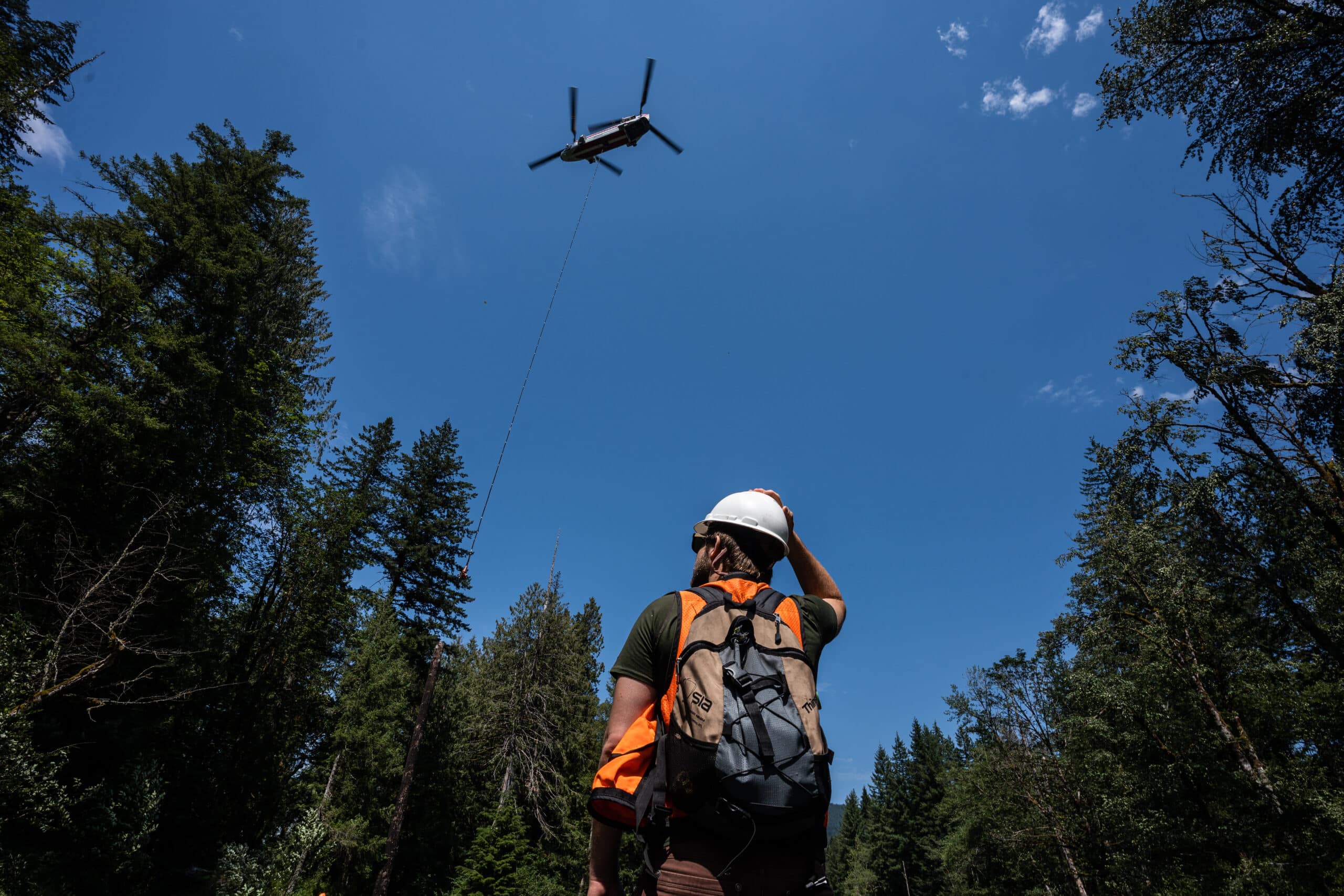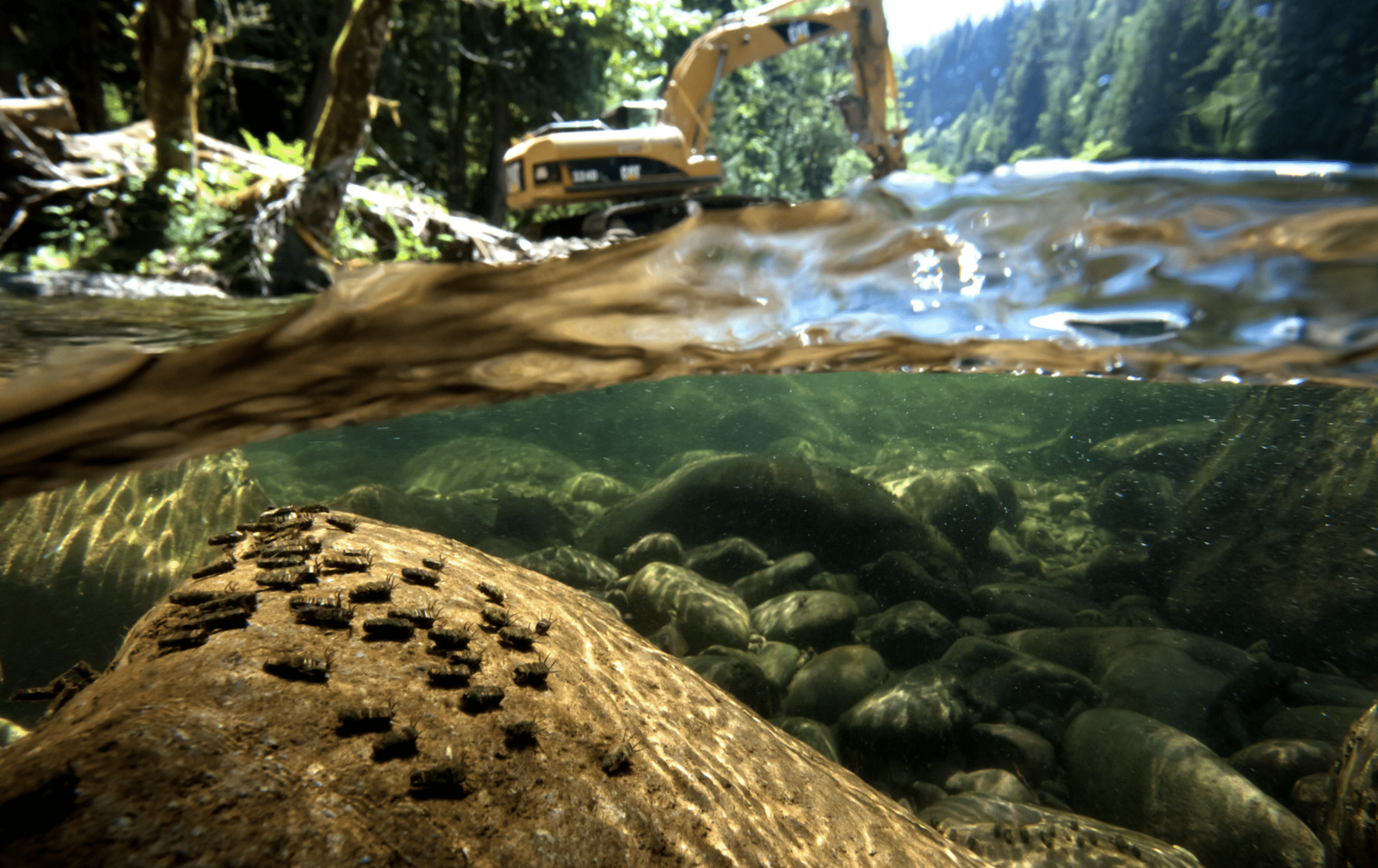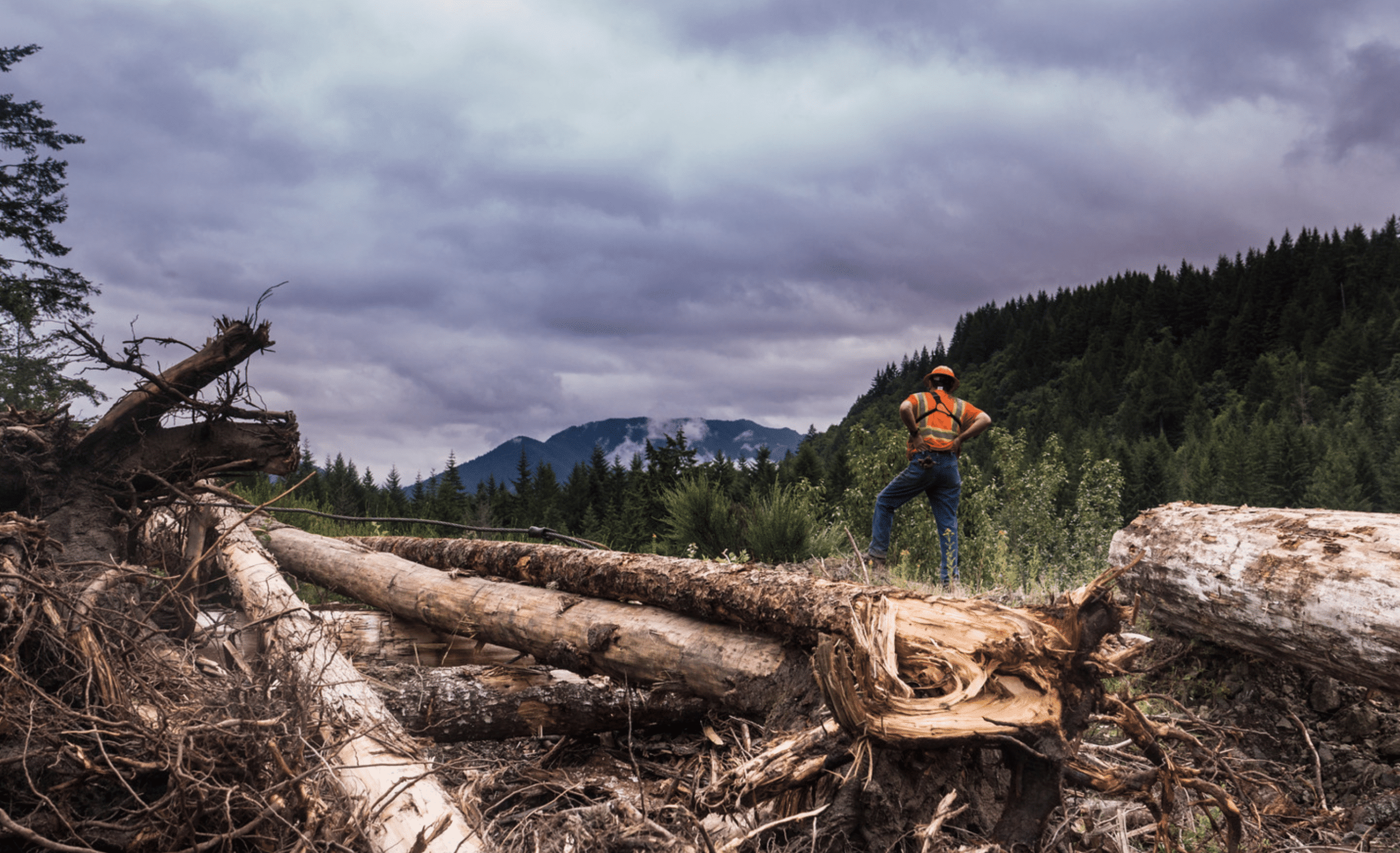Sandy River Basin
MISSION OF THE BASIN: Collaborate with nonprofits, agencies, and businesses to augment the recovery of endangered species.
The lushly forested Sandy River basin delivers drinking water to Portland and provides cold-water refuges for the summer migration of threatened salmon and steelhead from the Columbia River.
Despite past degradation, the basin has shown immense potential to revive its native fish populations. The Sandy River Basin Partners (Partners) formed in 1999, and The Freshwater Trust (TFT) helped lead the development of a holistic restoration strategy, a hierarchical framework of the most efficient projects that address the aquatic and floodplain habitat restoration needs for fish recovery.
Guided by this strategy, TFT has been working with the U.S. Forest Service and the Bureau of Land Management to complete projects at prioritized sites on public lands in the Upper Sandy. Actions include large wood placement, side channel and floodplain reconnection, and fish passage improvements.
After more than two decades of steady restoration, the Sandy continues to see strong fish returns, making it an outlier in stark contrast to the downward trajectories seen throughout the Pacific Northwest. The Partners are updating the restoration strategy to include climate change initiatives and to evaluate progress made to date. We anticipate that all Upper Sandy basin restoration projects can be completed by 2031, thus increasing resilience for this basin in the face of climate change.

